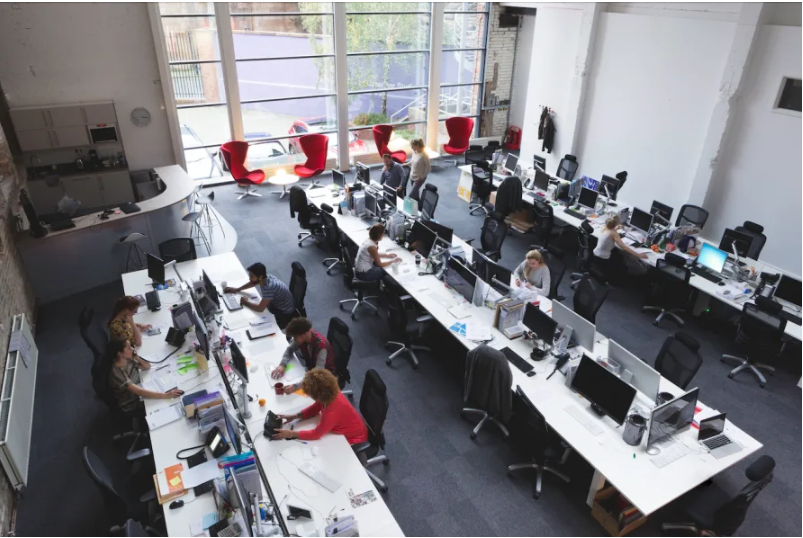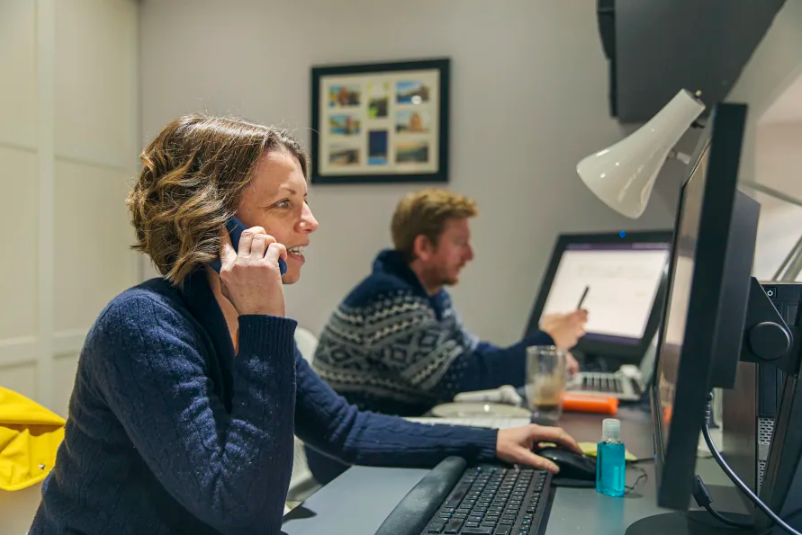Navigating the great office exodus

Before the pandemic, if you worked mostly from home, you were in a small minority of Australians (about six per cent) and you were most likely self-employed.
Fast forward to 2020 and 35 per cent of people spent some of their working week at home, and 21 per cent spent most of their working hours in a home office, spare bedroom or at the kitchen table.

Few firms allowed working from home before the pandemic changed everything.
The latest annual Household, Income and Labour Dynamics in Australia (HILDA) Survey reveals COVID-19 has triggered a seismic shift in how and where Australians work.
“Prior to the pandemic people were discussing working from home as the new big deal in the workplace. In fact, only a minority of firms were encouraging working from home … then the pandemic came along and changed everything,” says Professor Mark Wooden, Director of the HILDA Survey project team at the Melbourne Institute of Applied Economic and Social Research at the University of Melbourne.
Professor Wooden says the HILDA figures around working from home could also well be an under-estimate with the Household Impacts of COVID-19 survey conducted by the Australian Bureau of Statistics estimating that by December 2020, 27.4 per cent of Australians worked “mostly from home”.
From ‘nice to have’ to ‘must have’
The HILDA Survey follows the lives of more than 17,000 Australians each year, over the course of their lifetime, collecting information on many aspects of life in Australia, including household and family relationships, income and employment, and health and education.
Associate Professor Christhina Candido, Director of the Sustainable and Healthy Environments Lab in the Melbourne School of Design, says whereas working from home was once a “nice to have” option, now it is a “must have” for employers wanting to attract and retain workers.
“The appetite for flexible working arrangements already existed, particularly for the millennial workforce. But there was an attitude from management that you couldn’t get promoted if you were working from “under the doona,” says Associate Professor Candido.
“Flexible working arrangements were available before COVID but at small scale uptake – there was a wrong assumption (and still is to some extent) that you climbed out of bed and worked in your pyjamas.
Employers can’t keep this narrow-minded approach anymore after the large-scale uptake of new ways of working.”
At the time of the HILDA Survey in 2020, the Australian Capital Territory (at 33 per cent) and Victoria (at 33 per cent) – which was in the middle of a lengthy lockdown – had the highest number of people working from home.
In 2019, these figures sat at 2.4 per cent for ACT and Victoria. Numbers rose markedly in all states except Tasmania in 2020.
Industry-wide impacts
Only the agriculture, forestry and fishing industry bucked the working-from-home trend.
The financial and insurance services sector saw a 58 per cent rise in the number of employees working from home. Information media and telecommunications rose 40 per cent; professional, scientific and technical services rose 38 per cent; and public administration and safety saw 34 per cent more employees staying home.

While workers saved time on their daily commute during the pandemic, the effect on their productivity was more complex.
Not surprisingly, industries where face-to-face contact is key had a very different experience.
The number of employees working from home in accommodation and food services rose by less than two per cent, in retail by five per cent, in health care and social assistance by eight per cent, in construction by five per cent, and in transport, postal and warehousing by four per cent.
Feeling productive – or not
While workers saved time on their daily commute, did they feel more productive?
A third (33.3 per cent) felt productivity remained the same, 29 per cent felt it was a little worse and 13.4 per cent said their productivity was much worse.
Professor Wooden says this isn’t surprising as Australian workers had little time to prepare for the change to home working. Many didn’t have dedicated workspaces, while some may have shared a space with other family members or also had young children to supervise.
“Working from home is great if you have a large home, a separate office space and can remove yourself from noisy children. It might be a bonus for people living in McMansions who avoid the stress of the daily commute,” says Professor Wooden.
“When it is forced, it can penalise people from less advantaged backgrounds. Working from home isn’t equal for everybody.”

Giving people a choice about where they work and a purpose for being in the workplace is important to post-pandemic business culture.
Associate Professor Candido says the productivity question is complex and she adds the stress of lockdowns, poor mental health, seeing work as a distraction and refuge from the pandemic or perhaps working too hard for too long may all have impacted productivity.
Do I really need to go into the office?
HILDA also found hybrid working arrangements may not be the silver bullet that allows organisations and employees to straddle the old and newer style of working.
But giving people a choice about where they work and a purpose for being in the workplace is important.
Associate Professor Candido says brainstorming, decision-making, future thinking and collaborative activities are purposeful opportunities for people to meet at work.
“We still want to be around colleagues, but simply telling employees to do three days in the office and two days at home is not enough. Showing up to an empty office or going to work simply to spend a day on Zoom calls is pointless,” she says.
I can’t get no satisfaction
HILDA found working from home brought no significant increase in job satisfaction, at least when averaged across all workers, despite the potential for greater autonomy and flexibility as well as less time stuck in traffic or on public transport.

Brainstorming, decision-making, future thinking and collaborative activities are purposeful reasons to meet at work.
Professor Wooden explains this surprisingly small increase by the fact that working from home was forced on people whose home environment may have made work challenging.
“In the longer term, I suspect people who don’t find working from home satisfying will return to the workplace and those who want to stay at home will find their employers more accepting of that,” he says.
Victoria’s ghost town CBD
This prediction appears to be accurate, particularly in Victoria. In September 2022, the Victorian Government lifted work from home recommendations put in place to help reduce the transmission of COVID-19.
Two months later, in November 2022, occupancy data from the Property Council of Australia revealed that buildings in Melbourne’s city centre were still less than half full during the working week.
In Perth and Adelaide, CBD offices are 78 per cent and 76 per cent full, while Brisbane’s CBD buildings sit at 64 per cent capacity.
Winners and losers
The shift to working from home comes with a mixed bag of benefits and disadvantages.
The potential loss of social connectedness – an important part of maintaining good mental health – is an issue, as is ‘proximity bias’. This bias is the notion that employers are more likely to favour employees who are sat in front of them over more invisible remote workers.
“If working from home remains voluntary, some people will go to work to get ahead and others will miss out and there is the potential for all sorts of new inequalities to arise,” says Professor Wooden.
“Will working from home stick? At this point, we don’t know, but I doubt the number of workers in our CBDs will ever return to the levels they once were.”
Associate Professor Candido believes working from home – working from anywhere – is here to stay.
“The successful industries and businesses are changing the conversation. They are saying ‘let’s tap into this pool of talent that couldn’t work for my organisation before because of our workplace arrangements’.
“They are shifting the conversation from the time and place of work and are instead thinking about what needs to be achieved,” she says.
“These are unchartered waters and there is no doubt that the changes prompted by the pandemic are the most significant event in the workplace since the adoption of mobile technology. The pandemic unshackled us and that is both challenging and exciting.”
This article was published by Pursuit.













